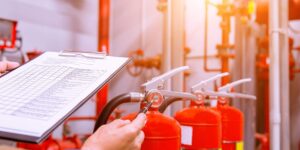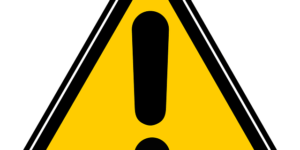One of the cornerstones of the successful operation of our company is the satisfaction of our employees. In order to achieve this, it is necessary to ensure them, among other things, the material, organizational and personal conditions for safe and health-free work. It was exactly this goal that the "XCIII of 1993 law on labor protection" (hereinafter: Mvt.) as well.
In addition to the Mvt., however, we have a number of regulations related to occupational health and safety, which are different documentation impose obligations on employers. The sea of documents may seem difficult to see at first, and the preparation of most of them is considered occupational safety and/or occupational health. In practice, this means that your company must enter into a contract with an occupational safety and occupational health company.
Mvt.: "8. § Legislation may classify certain tasks as occupational safety or occupational health. The employer may only have the tasks classified as work safety specialist activities performed by a person with occupational safety defined in separate legislation - mining in the field of mining - and the tasks classified as occupational health specialist activities in occupational health [occupational medicine (industrial medicine), occupational hygiene, public health-epidemiology, preventive medicine and public health]. "
The conclusion of the contract takes a large burden off the employer's shoulders, because the specialists prepare the necessary documents, such as:
- workplace risk assessment, in which the risks created by the activity, the work environment and the machines and equipment are assessed, the measures taken to reduce the risks are summarized and a proposal is made on the further actions necessary to minimize the risks
- registration of hazardous materials, checking the contents of safety data sheets. This is also an important step, because knowing the hazardous substances used, the specialist can prescribe the necessary protective equipment, and it can also help the occupational health specialist to carry out possible blood or urine tests (biological monitoring).
- personal protective equipment benefit scheme, which includes the type, level of protection and protection capacity of the protective equipment to be worn during the activity for each job
- order of medical examinations, in which we describe and regulate the direction and frequency of occupational medical suitability examinations of employees
- material for preliminary and repeated occupational safety training. Although the training itself can be held by anyone, the preparation of the training material is considered a professional occupational safety activity.
In addition to these basic occupational health and safety documents, a number of other "papers" are required depending on the activity carried out. Prior to the commissioning of our dangerous machines and technologies, preliminary inspections from an occupational safety point of view must be carried out, followed by periodic inspections at regular intervals. We must ensure regular inspections of our ladders, handcarts, and frogs, contact protection inspections of our electrical equipment, and mechanic inspections of our hand tools.
We may need to carry out a biological, chemical, ergonomic risk assessment in order to avoid occupational diseases.
After the occurrence of a possible work accident, it must be registered and investigated, appropriate conclusions must be drawn, and measures must be taken to avoid similar accidents in the future.
We take the documentation burden off the employer's shoulders, but don't forget! As a responsible employer, you cannot sit back, as you are responsible for complying with our recommendations!





